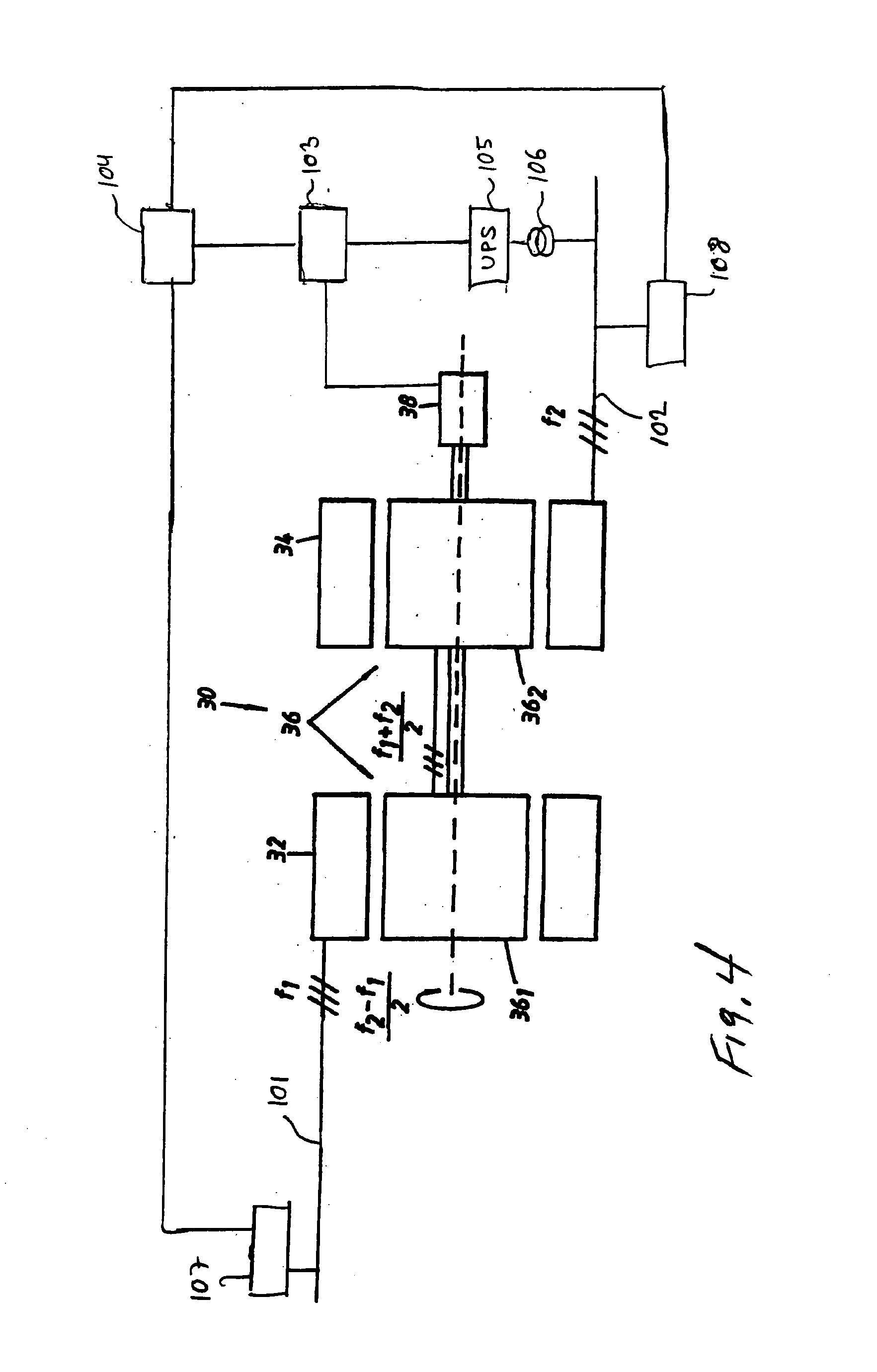Rotating asynchronous converter
a technology of asynchronous converters and converter transformers, which is applied in the direction of windings, electric motor speed/torque regulation, electric generator control, etc., can solve the problems of low efficiency (ca 95%), use of special converter transformers with very complex design, and drawbacks of static converters. achieve the effect of high efficiency
- Summary
- Abstract
- Description
- Claims
- Application Information
AI Technical Summary
Benefits of technology
Problems solved by technology
Method used
Image
Examples
Embodiment Construction
[0029] A preferred embodiment of the improved cable is shown in FIG. 3. The cable 20 is described in the figure as comprising a current-carrying conductor 22 which comprises transposed both non-insulated and insulated strands. Electromechanically transposed, extruded there is an inner semiconducting casing 24 which, in turn, is surrounded by an extruded insulation layer 26. This layer is surrounded by an external semiconducting layer 28. The cable used as a winding in the preferred embodiment has no metal shield and no external sheath.
[0030] Preferably, at least two of these layers, and most preferably all of them, has equal thermal expansion coefficients. Hereby is achieved the crucial advantage that in case of thermal motion in the winding, one avoids defects, cracks or the like.
[0031]FIG. 4 shows an embodiment of a rotating asynchronous converter 30 according to the present invention. The rotating asynchronous converter 30 is used for connection of AC networks with equal or dif...
PUM
 Login to View More
Login to View More Abstract
Description
Claims
Application Information
 Login to View More
Login to View More - R&D
- Intellectual Property
- Life Sciences
- Materials
- Tech Scout
- Unparalleled Data Quality
- Higher Quality Content
- 60% Fewer Hallucinations
Browse by: Latest US Patents, China's latest patents, Technical Efficacy Thesaurus, Application Domain, Technology Topic, Popular Technical Reports.
© 2025 PatSnap. All rights reserved.Legal|Privacy policy|Modern Slavery Act Transparency Statement|Sitemap|About US| Contact US: help@patsnap.com



